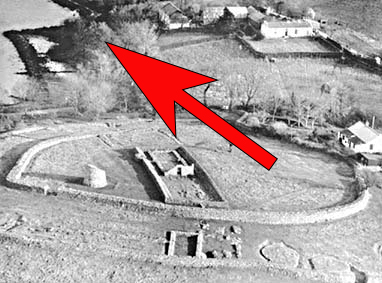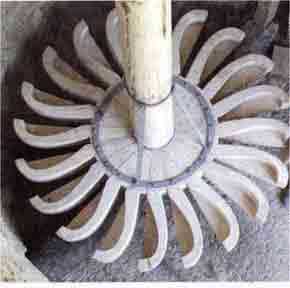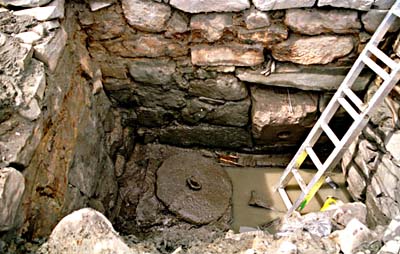The oldest tide mill was horizontal!
Water wheels also work laying down apparently

Researching tide mills the other day I asked the internet about the earliest. It declared that the earliest tidal mill so far discovered in Europe was excavated at Nendrum, Northern Ireland. It was built between 619 and 621 for an early Christian monastery (there’s always a monastery involved somewhere). The research says “Tidal mills have continued in use until modern times but were always rare by comparison with standard riverine mills”. You don’t come across the word ‘riverine’ every day. The link is here https://www.buildinghistory.org/buildings/mills.shtml
The Nendrum Mill (in the top left of the B/W pic) is slightly earlier than one found at Little Island, County Cork, in S Ireland that is dated at AD630 – predating the earliest known documentary references to tide mills anywhere in the world by almost four centuries! The reference is here: The Sequence of Early Christian Period Horizontal Tide Mills at Nendrum Monastery: An Interim Statement Thomas C. McErlean, Caroline Earwood, Dermot Moore and Eileen Murphy https://www.jstor.org/stable/25617456
Reading about this I got distracted from the sheer age of this Mill by the fact that it was a horizontal tide mill. So I asked Mr Google about that and came up with https://www.tidemillinstitute.org/horizontal-wheels/ As the picture shows such a wheel seems to entail
- Building a wide chamber to house a water wheel laying down, and
- considerably more complicated shaping of the paddles, and therefore
- less efficient drive power
No wonder that the water wheel went vertical – less space, simpler construction but involving the need to transfer a horizontal drive to vertical.

